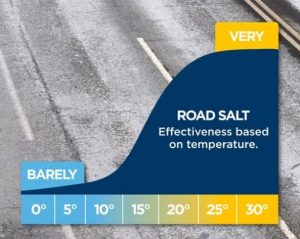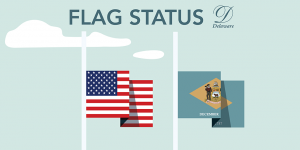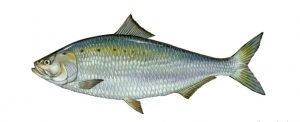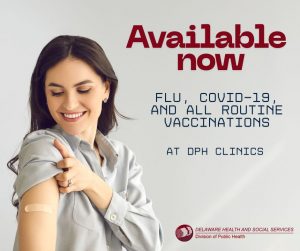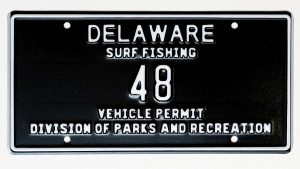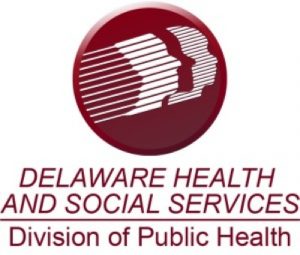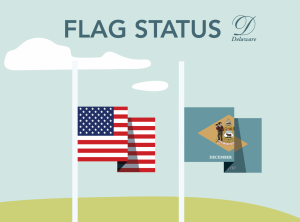DOVER (Oct. 23, 2013) – The Department of Natural Resources and Environmental Control and the Department of Health and Social Services’ Division of Public Health today updated the fish consumption advisory for fish caught in the tidal Delaware River. The updated advisory is a result of analysis of chemical contaminants in fish caught in the tidal Delaware River and elsewhere throughout the state. The change reflects long-term environmental improvements in the tidal Delaware River.
The fish consumption advisory for the tidal Delaware River from the Delaware/Pennsylvania/New Jersey border to the C&D Canal has been updated to a less restrictive advisory due to falling levels of polychlorinated biphenyls (PCBs), dioxins and furans, chlorinated pesticides, and mercury. For the general adult population, the current advice has been changed from “eat no finfish caught in the tidal Delaware River north of the C&D Canal” to “eat no more than one eight ounce meal of finfish per year,” while retaining the “do not eat” advice for women of childbearing age and young children. This advisory is being issued today in collaboration with the New Jersey Toxics in Biota Committee and the Delaware River Basin Commission.
“This updated advisory in the tidal Delaware River is a very positive sign that water quality is improving and that our efforts, especially during the past few years, are working,” said DNREC Secretary Collin O’Mara. “Initiatives, such as those that clean up harmful wastes and reduce pollutants from entering our waterways, along with cooperative efforts of the Delaware River Basin Commission and our state, federal, and local partners to address PCBs, are making a difference. Our goals are to clean up the remaining sources of contaminants, accelerate improvement in fish and ultimately lift advisories when they are no longer necessary.”
Fishing is a popular activity in Delaware and many people eat their catch. Although eating fish in moderation as part of a healthy diet may provide health benefits, fish can accumulate contaminants from the water, sediment and from the food they eat. Contaminants may build up over time in fish tissues even with extremely small amounts of chemicals in the water. The amount of contaminants in fish depends on the species, size, age, sex and feeding area of the fish. Chemicals, such as PCBs, mercury and dioxin in fish are a health risk for people who regularly consume their catch.
In addition to the advisory mentioned above, DNREC and DHSS remind the public of the general statewide fish consumption advisory first issued in 2007:
- Eat no more than one meal per week of any fish caught in Delaware’s fresh, estuarine and marine waters. This advisory applies to all waters and fish species not otherwise explicitly covered by an advisory.
The statewide advisory is issued to protect against eating large amounts of fish and fish that have not been tested or that may contain unidentified chemical contaminants. One meal is defined as an eight-ounce serving for adults and as a three-ounce serving for children. The statewide general advisory is consistent with a national advisory issued by the EPA and FDA, and with general advice given by many states throughout the country. Delaware issues more stringent advice for specific waters when justified by the data.
People who choose to eat species under advisories can take steps to reduce exposure. Contaminants tend to concentrate in the fatty tissue, so proper cleaning and cooking techniques can significantly reduce levels of PCBs, dioxins, chlorinated pesticides and other organic chemicals. Larger fish of a given species will likely have higher concentrations. To reduce your risks of ingesting these chemical contaminants:
- Remove all skin.
- Slice off fat belly meat along the bottom of the fish.
- Cut away any fat above the fish’s backbone.
- Cut away the V-shaped wedge of fat along the lateral line on each side of the fish.
- Bake or broil trimmed fish on a rack or grill so some of the remaining fat drips away.
- Discard any drippings. Do not eat drippings or use them for cooking other foods.
However, these techniques will not reduce or remove unsafe levels of mercury from fish.
The Delaware Fish Contaminants Committee, with representatives from DNREC and the Department of Health and Social Services (DHSS), recommends sampling and has overseen the collection of fish tissue samples from Delaware’s streams, ponds, estuaries, and ocean waters. The committee makes recommendations to the Secretaries of DNREC and DHSS as to the appropriate advisories to put into place.
The revised fish consumption advisories chart with meal advice for fish caught in Delaware waterways and information on the monitoring program can be found on DNREC’s web site, http://www.fw.delaware.gov/Fisheries/Pages/Advisories.aspx.
In addition, the updated advisory will be listed in the fish consumption advisories chart in the 2014 Delaware Fishing Guide that will be available at local tackle shops and fishing license dealers in early 2014. The Department of Health and Social Services’ Division of Public Health also posts fish advisory signs along waterways with consumption advisories.
For more information, contact Dr. Rick Greene, DNREC Division of Watershed Stewardship, 302-739-9939.
Visit the following U.S. government websites for information on federal fish consumption advisories, on mercury in fish and shellfish, and on how to safely select and serve fresh and frozen fish.
Contact:
DNREC Public Affairs, Melanie Rapp, 302-739-9902
DHSS: Rita Landgraf, Secretary; Jill Fredel, Director of Communications, 302-255-9047,
Pager 302-357-7498, Email: jill.fredel@delaware.gov


